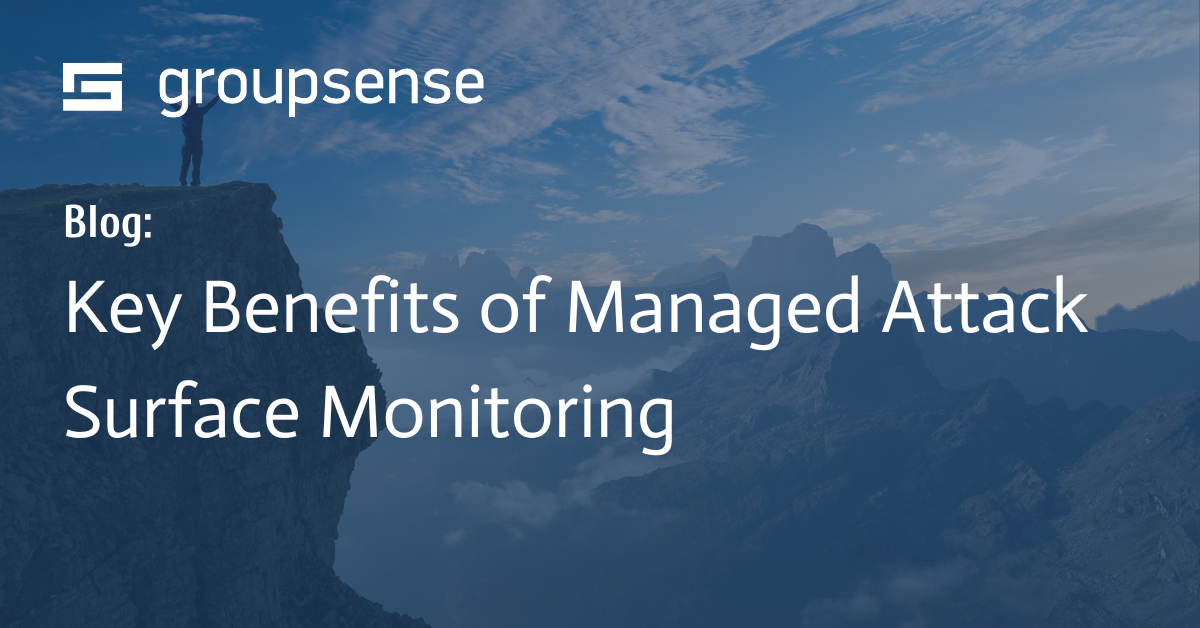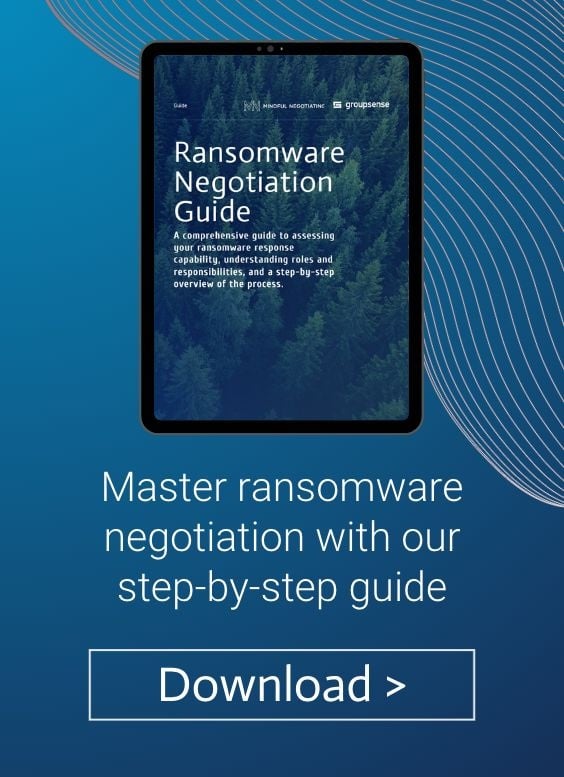In today's increasingly digital world, organizations face a growing number of online threats that can compromise their data, reputation, and customer trust. To mitigate these risks, many businesses are turning to managed attack surface monitoring services. But with so many service providers to choose from, how do you find the right one for your organization? In this article, we will explore the key considerations you should keep in mind when selecting a managed attack surface monitoring service provider.
Understanding Managed Attack Surface Monitoring
Before diving into the selection process, it's important to have a clear understanding of what managed attack surface monitoring entails. In simple terms, it is a proactive approach to identifying and mitigating potential vulnerabilities in your organization's digital footprint. This includes monitoring websites, applications, and any other online assets for potential security risks.
Managed attack surface monitoring goes beyond traditional security measures by providing continuous scanning and analysis of your organization's digital assets. This involves utilizing specialized tools and technologies to identify potential vulnerabilities within your online presence. By doing so, you can address these weaknesses before they can be exploited by malicious actors, ensuring the security and integrity of your digital infrastructure.
One of the key aspects of managed attack surface monitoring is its proactive nature. Instead of waiting for a security breach to occur, this approach allows you to stay ahead of potential threats. By regularly monitoring your attack surface, you can detect and remediate vulnerabilities before they can be exploited, significantly reducing the risk of a successful cyber attack.
What is Managed Attack Surface Monitoring?
Managed attack surface monitoring involves the continuous scanning and analysis of your organization's digital assets. This comprehensive approach ensures that all aspects of your online presence are thoroughly examined for potential security risks. From websites to applications, every component of your digital footprint is scrutinized to identify vulnerabilities that could be exploited by cybercriminals.
Specialized tools and technologies are employed to conduct thorough assessments of your attack surface. These tools leverage various techniques, such as vulnerability scanning, penetration testing, and threat intelligence analysis, to identify weaknesses in your digital infrastructure. By combining these techniques, managed attack surface monitoring provides a holistic view of your organization's security posture, allowing you to take proactive measures to protect your digital assets.
The Importance of Attack Surface Monitoring
The importance of attack surface monitoring cannot be overstated. As cyber threats continue to evolve, it is crucial for organizations to stay one step ahead. Traditional security measures, such as firewalls and antivirus software, are no longer sufficient to protect against sophisticated attacks. Attack surface monitoring provides an additional layer of defense by continuously monitoring your digital assets for potential vulnerabilities using the intelligence cycle.
By actively monitoring your attack surface, you can detect and remediate potential vulnerabilities, thereby reducing the risk of a successful cyber attack. This proactive approach allows you to identify and address security weaknesses before they can be exploited by malicious actors. It also helps in maintaining regulatory compliance and meeting industry standards for security.
Furthermore, attack surface monitoring enables you to gain valuable insights into your organization's security posture. By understanding the vulnerabilities present in your digital infrastructure, you can make informed decisions regarding security investments and prioritize remediation efforts. This not only enhances your overall security but also helps in optimizing resource allocation and minimizing potential financial losses.
In conclusion, managed attack surface monitoring is a proactive and comprehensive approach to identifying and mitigating potential vulnerabilities in your organization's digital footprint. By continuously monitoring your attack surface, you can stay ahead of cyber threats and ensure the security and integrity of your digital assets.
Key Considerations When Choosing a Service Provider
Now that we have a solid understanding of managed attack surface monitoring, let's explore the key considerations you should keep in mind when selecting a service provider.
When it comes to choosing a service provider for managed attack surface monitoring, there are several factors that you should take into account. These factors can greatly impact the effectiveness and efficiency of the monitoring process, as well as the overall security of your organization.
Evaluating the Provider's Expertise and Reputation
One of the first things you should assess is the provider's expertise and reputation in the industry. Look for established providers with a track record of success in helping organizations improve their security posture. Consider reading reviews and testimonials to get a sense of their customer satisfaction levels.
Furthermore, it is important to consider the specific expertise of the service provider. Do they specialize in attack surface monitoring? Do they have experience in your industry or with organizations of a similar size? These are important questions to ask to ensure that the provider has the necessary knowledge and skills to effectively monitor your organization's attack surface.
Assessing the Provider's Technology and Methodology
The technology and methodology used by the service provider are also critical factors to consider. Evaluate the tools and techniques they employ to identify and analyze potential vulnerabilities. Additionally, ensure that their technology is up-to-date and capable of detecting both known and emerging threats.
Consider asking the service provider about their approach to continuous monitoring. Do they use automated tools to regularly scan your attack surface? How do they handle false positives and prioritize vulnerabilities? Understanding the provider's methodology will give you insight into how they will protect your organization from potential threats.
Understanding the Provider's Pricing Structure
Another important consideration is the provider's pricing structure. Although cost should not be the sole determining factor, it is essential to understand how the service provider charges for their services. Consider factors such as the scope of monitoring, the frequency of scans, and any additional services included in the package.
Additionally, it is important to evaluate the scalability of the provider's pricing structure. As your organization grows, you may need to increase the level of monitoring or add additional services. Ensure that the provider's pricing can accommodate your future needs without incurring significant additional costs.
Ultimately, choosing the right service provider for managed attack surface monitoring requires careful consideration of their expertise, reputation, technology, methodology, and pricing structure. By thoroughly evaluating these factors, you can make an informed decision that will help protect your organization from potential cyber threats.
Detailed Analysis of Managed Attack Surface Monitoring
Now that we have covered the key considerations for choosing a service provider, let's delve deeper into the details of managed attack surface monitoring services.
Managed attack surface monitoring services offer several features and benefits that can greatly enhance your organization's security posture. These include continuous monitoring, vulnerability assessments, proactive threat intelligence, timely alerts and notifications, and expert support in remediating identified vulnerabilities.
Continuous monitoring is a crucial aspect of managed attack surface monitoring services. It ensures that your organization's attack surface is constantly monitored for any potential vulnerabilities or threats. This real-time monitoring allows for immediate detection and response to any suspicious activities, minimizing the risk of a successful attack.
Vulnerability assessments are another key feature offered by managed attack surface monitoring services. These assessments identify and evaluate potential vulnerabilities in your organization's attack surface, providing valuable insights into areas that require immediate attention. By conducting regular vulnerability assessments, you can proactively address any weaknesses and strengthen your overall security posture.
Proactive threat intelligence is an essential component of managed attack surface monitoring services. It involves the collection, analysis, and interpretation of data from various sources to identify emerging threats and trends. By staying ahead of potential threats, you can effectively mitigate risks and protect your organization's sensitive information.
Timely alerts and notifications are critical in managed attack surface monitoring services. When a potential threat or vulnerability is detected, the service provider promptly notifies your organization, allowing for immediate action. This proactive approach ensures that you are always aware of any potential risks and can take appropriate measures to mitigate them.
Expert support in remediating identified vulnerabilities is another significant benefit of managed attack surface monitoring services. The service provider's team of security experts can guide your organization in addressing any identified vulnerabilities, providing recommendations and best practices for remediation. This support ensures that you can effectively eliminate vulnerabilities and strengthen your overall security posture.
Potential Drawbacks and Limitations
While managed attack surface monitoring services offer a range of benefits, it is important to be aware of potential drawbacks and limitations. These may include limitations in coverage, false positives, delayed response times, or limited customization options. Assess these factors in light of your organization's specific needs and requirements before making a decision.
Limitations in coverage can arise when the managed service provider's monitoring capabilities do not extend to all aspects of your organization's attack surface. It is crucial to evaluate whether the service provider can effectively monitor all relevant areas to ensure comprehensive security coverage.
False positives can be a challenge in managed attack surface monitoring services. These occur when the service provider identifies a potential threat or vulnerability that is not actually present. While false positives are inevitable to some extent, it is important to consider the service provider's accuracy in detecting actual threats and vulnerabilities.
Delayed response times can be a potential drawback of managed attack surface monitoring services. It is important to understand the service provider's response time in addressing identified threats or vulnerabilities. A prompt response is crucial to minimize the impact of potential attacks and protect your organization's sensitive information.
Limited customization options may also be a limitation in managed attack surface monitoring services. Some service providers may have predefined configurations and limitations on customization. It is important to assess whether the service provider can tailor their services to meet your organization's specific requirements and security policies.
By carefully evaluating the features, benefits, drawbacks, and limitations of managed attack surface monitoring services, you can make an informed decision that aligns with your organization's security needs. Remember to consider your organization's specific requirements and conduct thorough research before selecting a service provider.
Case Studies of Successful Managed Attack Surface Monitoring Implementations
To gain a better understanding of the real-world impact of managed attack surface monitoring, let's explore two case studies showcasing successful implementations.
Case Study 1: Large-scale Enterprise Implementation
In this case study, a large-scale enterprise with a vast digital footprint implemented a managed attack surface monitoring service. By proactively monitoring their expansive online presence, the organization was able to identify and address multiple vulnerabilities before they could be exploited. This resulted in enhanced security and peace of mind for the enterprise and its customers.
Case Study 2: Small Business Implementation
Even small businesses can benefit from managed attack surface monitoring services. In this case study, a small business with limited resources partnered with a managed service provider to secure their online assets. By leveraging the provider's expertise and technology, the business was able to reduce their attack surface, improve their security posture, and focus on their core operations.
Future Trends in Attack Surface Monitoring
As technology evolves, so too does the realm of attack surface monitoring. Let's explore some future trends that may shape the industry.
The Impact of AI and Machine Learning
Artificial intelligence (AI) and machine learning (ML) have the potential to revolutionize attack surface monitoring. By leveraging these advanced technologies, service providers can enhance their detection capabilities, improve accuracy, and reduce false positives. AI and ML also enable automated analysis of large datasets, enabling faster and more efficient vulnerability identification.
The Role of Cloud in Attack Surface Monitoring
The cloud has become an integral part of modern businesses, and its role in attack surface monitoring is no exception. Cloud-based solutions offer scalability, flexibility, and ease of deployment, making them an attractive option for service providers and organizations alike. The cloud also facilitates real-time monitoring and analysis, enabling rapid response to potential threats.
In conclusion, choosing a managed attack surface monitoring service provider is a crucial decision for any organization seeking to safeguard their digital assets. By considering factors such as expertise, reputation, technology, pricing, and past successes, you can select a provider that aligns with your organization's unique needs and requirements. Additionally, understanding the features, benefits, drawbacks, and future trends in attack surface monitoring will enable you to make an informed decision that enhances your overall security posture.










